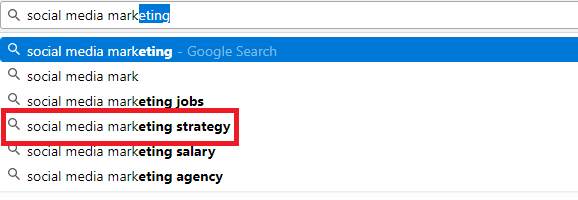
Digital Lead Generation Series, Part Four: Social Media
Digital Marketing Manager
Burns360
Social Media. To some B2B companies, it’s still considered the “new frontier” of marketing. And even to those who know what kind of impact social media can deliver, questions remain on how to replicate its success in a business scenario—towards lead generation.
Strangely enough, however, the typical explanations for using social media offer no real business insight at all.
- “More than half of your current customer base is on Facebook!”
- “Post your product pictures onto Instagram to boost your engagement!”
- “Share your thought-leadership pieces and blog posts over Twitter to increase conversions!”
These statements (and countless more) might be true, but they’re isolated facts, rather than solutions, which is why many companies are surprised when they don’t work.
To get the answers you’re looking for, a tactical approach isn’t enough. Rather than talk about tactics, let’s tackle what social media marketing really is—and how to develop new contacts from it.
Social media marketing is, first and foremost, having a meaningful conversation
Social media is just that—social. Like any social setting, you have to take the time to communicate and connect meaningfully with the person you’re talking to. The most common mistake I’ve seen from companies is simply using their social media channels as a loudspeaker to talk about all the success their company has achieved.
Imagine if this happened in a party, where you, as the representative of your company, simply hopped from person to person bragging about how great your company is. Soon enough, people would just tune you out.
So instead of talking about you, talk about them. What their needs are. What their complaints are. What keeps them up at night. And ultimately, what they’re looking for to solve their business problems.
Starting the conversation: How to effectively share valuable information
You want to have a genuine conversation with your potential clients, but how do you start?
- Start with known influencers. Where do they post? And about what? Do they usually keep within Facebook? Or are their LinkedIn posts more prominently shared than their tweets? Influencers in your industry will give you a good idea of where your own audience primarily goes.
- Use Google auto-complete. After knowing where to post, next comes the “what”. Google indexes searches and results on all major social media channels, including its own. So, when you start to look for something and Google automatically completes your search, it means other people are looking for the same keyword phrase you’re typing in.In the example below, the letters in bold show what Google automatically completes for you when you’re typing in the keyword phrase, “social media marketing.”
 If, for instance, you’re a marketing firm that wants to begin a meaningful social media conversation, Google shows you that topics related to “social media marketing strategy” are definitely being searched for. This is a great way to find opportunities for meaningful conversation.
If, for instance, you’re a marketing firm that wants to begin a meaningful social media conversation, Google shows you that topics related to “social media marketing strategy” are definitely being searched for. This is a great way to find opportunities for meaningful conversation. - Contribute to the conversation with relevant comments. It’s not enough to just talk about the topic (like capitalizing on a viral Twitter hashtag). You need to consider what you can bring to the conversation and what you know about your industry that the competition isn’t talking about.Sometimes viewed as giving away “secrets of the trade”, many companies find this step to be the most challenging. After all, why broadcast your hard-earned knowledge for the entire world to see? Historically, proprietary information has been kept behind lock and key.But in this age of open information, people typically search for solutions to their problems before contacting a vendor who offers what they’re looking for. Key insights will brand you as a capable member and leader in your industry—which builds trust between you and your potential client.
- Finally, emphasize a “call-to-conversation”.
At the end of a good conversation, you typically exchange contact information when appropriate. The same applies with social sharing.Offer to continue the conversation if they have questions, comments or any additional needs that you and your company can help with. To encourage action, highlight other topics that may be related to the issue you just talked about.And, if nothing else, encourage them to follow your social media channels, promising more insights into your solutions. These are all natural ways to grow your audience and, of course, generate highly qualified leads.
And with that, this marks the end of our four-part series on digital lead generation! If you missed any of the parts, I’ve linked to them down below.
Part 1: Forms
Part 2: Calls
Part 3: Ads
Still have any questions or comments? Drop us a line here. I’d love to hear from you!


